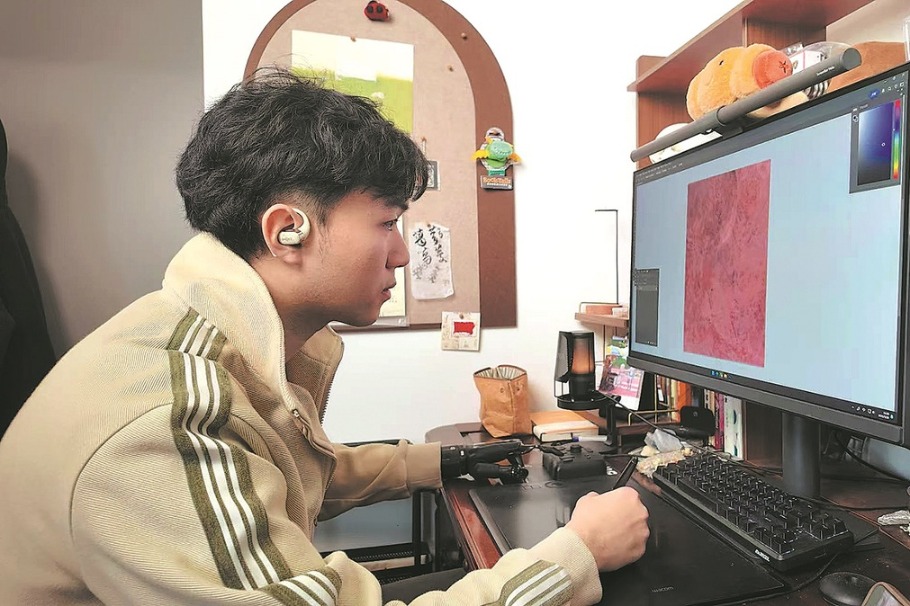Ranger's botanical expertise flowers
Despite years of experience with wild animals, Shennongjia reserve's wealth of wild plants inspires his devotion

After four years protecting golden snub-nosed monkeys in the wild and two years taking care of giant pandas in zoos, Wang Min ought by rights to have become a wildlife expert.
Instead, his love for flowers and plants proved more genuine, and more stubborn. Now, after 31 years working at the Shennongjia National Nature Reserve in Hubei province as a ranger, the 48-year-old has become known locally as a botanical "soil expert".
Wang started working at the nature reserve in the Shennongjia Forest Area in June 1993, following in the footsteps of his father, who worked as a logger on the Shennongjia forest farm in 1962 before becoming a patrolman when the farm became a reserve in 1982.
Wang's father retired in 1995 and passed away last year.
As a second-generation patrolman, Wang has worked in a number of the reserve's patrol stations. His first post in 1993 was at the Houzishi (Monkey Stone) Patrol Station, where he worked for four years keeping an eye on wild snub-nosed monkeys, a rare animal under first-level State protection, that inhabit the surrounding forest.
As the population of monkeys grew, the station's administrative area was merged with the Shennongjia scenic area and today, tourists have the chance to observe the monkeys in the wild.
Wang was then moved to another patrol station, where he monitored wildlife for 11 years, becoming familiar with the reserve's many monitoring trails, as well as the plants that lived along them.
As a biodiversity hot spot and UNESCO World Heritage site home to more than 4,000 vascular plant species, Shennongjia is a magnet for botanists from across the country and as an experienced ranger, Wang has had plenty of opportunities to guide, in the process learning from the experts.
"As a ranger, you naturally know something about the animals or plants in the area," Wang told China Daily at his office in Muyu, the administrative seat of the county-level Shennongjia Forest Area. "The experts ask you questions about them, and if you don't know the scientific name for a particular plant, you'd better know its local name."
The desire to learn those names finally took him into the realm of botany.
In 2005, Wang got the chance to learn to identify plants from a researcher at the Chinese Academy of Sciences during a 15-day training course organized by the reserve.
Between 2008 and 2017, he was transferred to the reserve's scientific research academy, where he participated in scientific surveys as a guide, including a comprehensive three-year survey of the reserve's fauna and flora. As a result, his understanding of the area's plant diversity grew.
In November 2010, Wang met Zhang Shigui, a teacher from Jishou University in Hunan province, who had been invited to help the reserve sort through a collection of around 20,000 unidentified plant specimens, and began to learn with him.
Over the years, Wang has collected many specimens, some for the reserve and some for researchers from other institutions.
"If we find rare species such as Berchemiella wilsonii, which is an extremely rare plant, while on regular patrol, we have to collect a specimen as a record," he explained. "Of course, to discover rare species, you have to know how to identify them first."
Although he was sent to Beijing Zoo to learn to take care of giant pandas for a year in 2015, and then worked as a panda keeper at a scenic area belonging to the reserve for a couple of months, Wang never stopped studying botany.
"As an outside observer, I felt that the decision to send him to care for giant pandas was a little ridiculous," said Du Wei, a botanist at Wuhan University, who was sent to work with the reserve administration for a year as part of a government project in 2014, and met Wang. "But he was amazing. I saw him reading the heavy volumes of The Flora of Hubei."
In February 2019, Wang finally returned to the reserve to work as a ranger and was promoted to director of the Muyu Protection Center, where he is responsible for overseeing 11 rangers monitoring 50 patrol routes.
The shortest is 6 kilometers and the longest 25 km. "It takes us 3 to 4 days to walk the longest route," he said. "It takes us a month to finish patrolling all of the routes once."
As a result, he has become familiar with most of the plants under State protection within the center's administration.
At present, the center has five full-time rangers including Wang, but employs 48 part-time patrolmen from the villages under its jurisdiction. "We pay them 400 yuan ($56) a month," Wang said. "When we patrol a particular route, one of the part-time patrolmen living nearby goes with us as our local guide."
On a regular patrol, Wang and his colleagues try to identify all the flowers, birds and animals they see along the way, and record sightings on a mobile handset.
He said that many State-protected trees grow in forests belonging to village collectives or even to individuals, and so if villagers apply to fell trees in the forests under the reserve's administration, rangers are sent to tell them to avoid protected species.
"That's also why I need to know how to identify plants," Wang said. "I also need to be familiar with where protected plants are located in my area."































